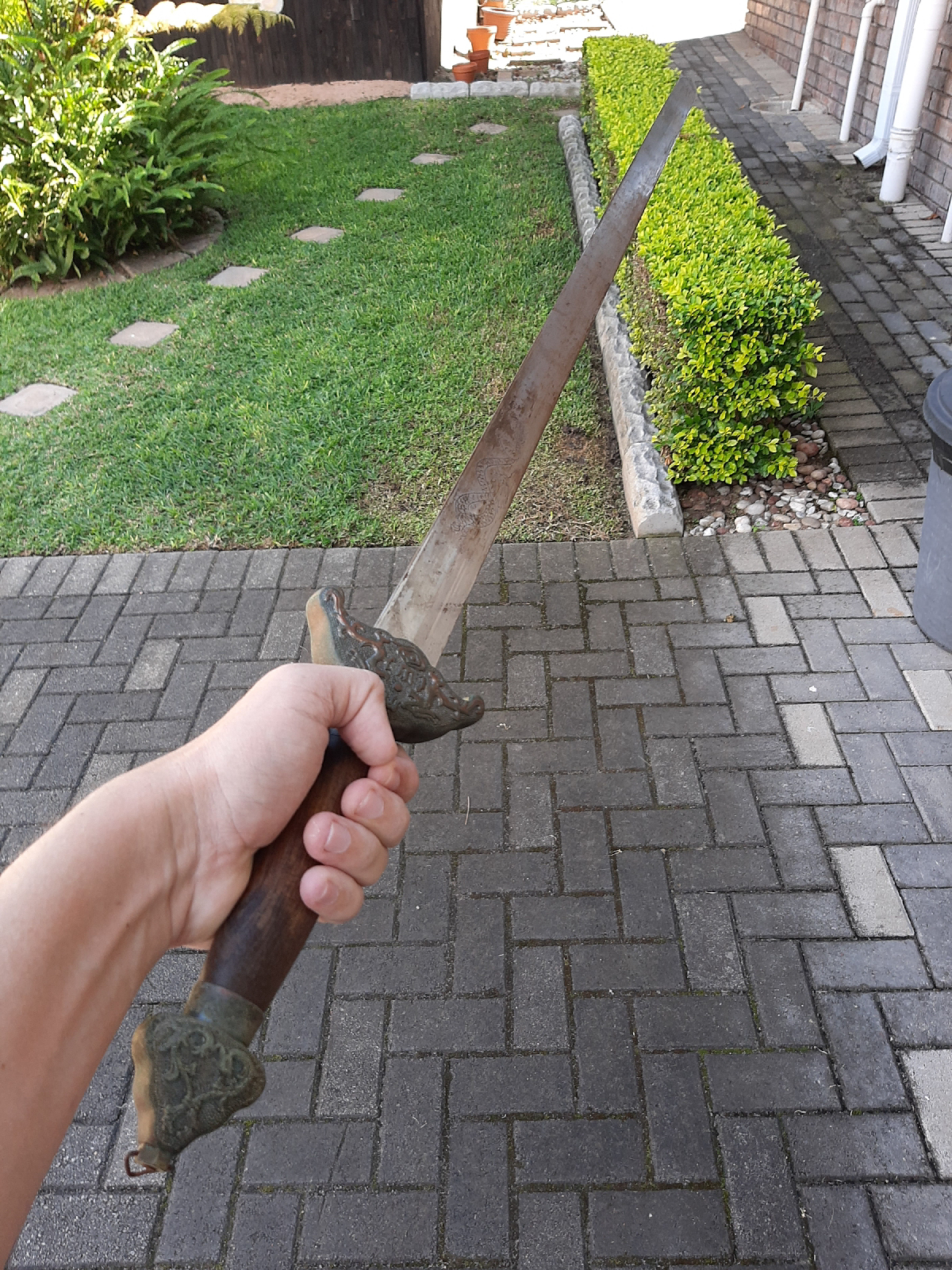Some Jian Basics
Hello, everyone.
A week ago I was chatting with one of my martial arts friends on Facebook- Nicolas Killen- and we somehow ended up talking about swords.
Now- you will know from previous posts (very recent posts) that I have a Katana and a Jian.
Nicolas said that he would like to learn a bit about Chinese swordfighting and I said I would gladly help out, so-
During the weekends to come I am going to post some basic lessons for use of the Jian- or- Chinese straight sword.
The one that I have has a dull flexible blade. I have not seen any with sharpened blades, though-
So- I don't entertain any fantasies of dismembering or decapitating anyone...
It does not render the weapon ineffective, though...
To use the sword properly you need to understand its design. The sword has one section designated for defense and 3 for attacking.
Let's look at these parts from the handle up...
The pommel often has a tassle attached to it. It can be used for striking at close range- especially against limbs. Mine's tassle had become frayed with years of continuous use. So- I have removed it.
The metal of the base section of the blade it thicker and more rigid than the rest of the blade. This is the part with which you would want to block strikes from other weapons...
The section of the blade towards the tip is thinner and flexible. It may seem impractical- and I honestly don't know what has inspired this design, but- I will recommend you think of anything caught in a helicopter's rotor blades while they are spinning at full speed. This is the kind of cut that you will try to make when using this sword...
Then of course- we have the tip. Stabbing with it reminds me a lot of striking with the fingertips. Concentrate on driving from the handle and you will find the blade bending and not manage to do much stabbing. Focus on hitting with the tip, though- and you end up piercing your target.
Then of course- we have the tip. Stabbing with it reminds me a lot of striking with the fingertips. Concentrate on driving from the handle and you will find the blade bending and not manage to do much stabbing. Focus on hitting with the tip, though- and you end up piercing your target.
So- with that said- we can look at some basic techniques to practice...
Stabbing left and right loosens the wrist and also trains your body to stab from wherever the sword is. Stabbing is this weapon's primary method of attack, so- it helps to practice it regularly so that you can do it without thinking.
All basic and form practice is done with the qi lowered. As with most classic Chinese martial arts a rooted stance with the qi sunk to the abdomen is essential.
I tend to believe that one of the reasons why classical martial arts have this much repetitive practice of the basics is to train you to keep your qi lowered as you execute a technique.
I know one's qi is lowered when:
I know one's qi is lowered when:
- the centre of gravity rests as low as it comfortably can;
- there is no tension in the neck and shoulders;
- movement is smooth without unnecessary telegraphing.
This body rotation that starts from horse stance and then flows into an alternating repetition of unicorn step and back stance loosens the hips. The torso is the largest area for someone to attack. Attacks to the leg can be avoided by lifting or withdrawing the leg, attacks to the head by ducking, leaving or weaving. The torso, however, is a large area to protect. Jumping backwards will make it necessary for you to jump forward again to counterattack. So- keeping the back foot firmly in place and letting your opponent's attack slide by either side of you enables you to counterattack better.
The twist is combined with a block. In this exercise I am using a soft mid-section block with each twist.
I have said earlier that cutting with this weapon should be like cutting with a helicopter's rotor blade. So- this exercise has us standing firmly rooted and then whipping out the blade in a sharp outward whipping motion that is powered by the legs and hips. It is followed by an inward swipe that is also powered by the hips and legs. If the blade cleaves through the air without any resistance you are doing well.
The whipping motion uses the wrist to add that extra shock to the technique.
I like to practice holding the sword in each hand with each exercise.
In the posts to come I will share an attack, a defensive move and then a form to practice.
I have published this post here so that anyone else who is interested can also learn.
See you next week. :)
See you next week. :)





Comments
Post a Comment